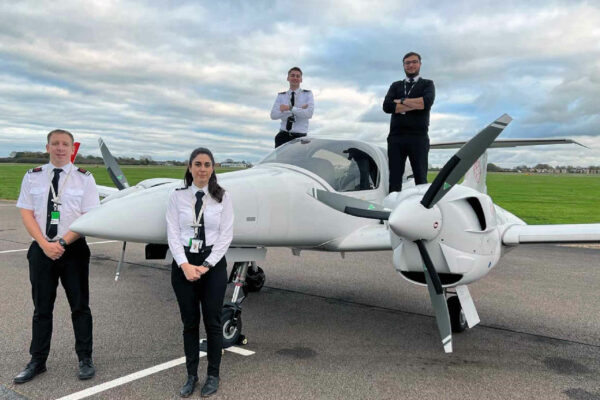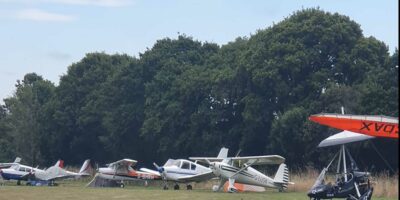For some reason about 10 days ago Skywise deemed it pertinent to remind us that the Channel Islands had published a letter of ‘no operational objection’ regarding holders of the UK Pilot Medical Declaration (PMD).
A slight sense of déjà vu struck, and on closer inspection I realised this was referring to a letter originally published in November of last year. It may be a timely reminder though. I suspect there are far more pilots contemplating flying to the Channel Islands (or indeed anywhere abroad) now than six months ago.
The letter was a joint statement from the Directors of Civil Aviation in Guernsey and Jersey respectively. The Guernsey directorate encompasses Alderney. The Isle of Man issued a similar notice last year, so pilots holding a PMD can also add the island to its list of possible destinations.
The subject of ‘sub-ICAO’ pilot licences, medicals and airworthiness can be confusing at the best of times, so as we continue into the first year since 2019 of relatively unrestricted travel, it may be worth a review.
It tends to be an issue more associated with the lighter end of the GA spectrum, but as fuel and living costs increase, more people may think about moving in this direction. One downside can be the restrictions around international travel, but with a bit of research, some is possible.
Medical declaration rules
The current requirement for making a pilot medical declaration when flying aircraft up to 2000kg MTOW is that you reasonably believe that you meet the DVLA medical requirements for a Group 1 (Car) licence and are not taking medication for any psychiatric illness.
I am not really qualified to elaborate on ‘psychiatric illness’, but I think it was intended to cover any condition of a psychiatric nature that requires medication – note that is an extra requirement above the DVLA Group 1 standard.
If you do not meet the PMD requirements for some reason, the alternative is to apply for a Light Aircraft Pilot Licence (LAPL) medical, the key being that a medical professional is involved, who can assess whether you meet the relevant standards. It does not mean you have to obtain a LAPL licence.
There is provision for PMD in aircraft up to 5,700kg but the list of ‘disqualifying conditions’ is much longer, and I suspect the market for this option is limited, particularly since PMD holders are not permitted to carry more than three passengers onboard.
Originally PMD holders were limited to non-EASA aircraft (now referred to as ‘non-Part-21’) and national licences, but operation of Part-21 aircraft (normally factory built, certified aircraft) within the privileges of the LAPL is now permitted – LAPL privileges being similar to those for the PMD anyway.
PMD generally limits you to the UK and the aforementioned Crown Dependencies, albeit depending on the aircraft you fly, there can be exceptions to this.
Permit aircraft
‘Permit aircraft’ is a broad church, but one thing they all have in common is that the right of international passage is not guaranteed in the way it is for aircraft with an ICAO Certificate of Airworthiness.
However, there are international agreements that facilitate travel within Europe. For example, the 1980 European Civil Aviation Conference (ECAC) agreement on amateur built aircraft generally allows flight within ECAC member states for up to 28 days at a time.
Not all states have implemented the agreement without further formality, so check the individual requirements as part of pre-trip planning – some states still require individual permissions to be issued.
“ ‘Permit aircraft’ is a broad church, but one thing they all have in common is that the right of international passage is not guaranteed in the way it is for aircraft with an ICAO Certificate of Airworthiness”
The Channel Islands are technically not part of ECAC and although used to have a similar provision for permit aircraft, I could not find a current document confirming this, so it may be that an individual permission is required via the Director of Civil Aviation.
In 2016 a similar ECAC agreement covering historic aircraft was reached – ‘historic’ in this context being aircraft designed before 1955 and ceasing production before 1975.
As with the amateur build agreement, individual implementation varies.
For factory-built microlights there is no overarching agreement through ECAC and nor is there a single European ‘microlight’ definition. Often foreign microlight aircraft are permitted to visit based on meeting the same definition as that of the host state.
Many European states have adopted the 600kg MTOW criteria, but France is a notable exception, having drawn the line at 500kg for their equivalent ‘ULM’ aircraft category.
France allows foreign registered microlights that meet the French ‘ULM’ aircraft definition, but a 600kg machine would fall outside of this and therefore require an individual permission from the DSAC (the safety oversight department of the French DGAC).
For pilot licensing, states that allow foreign microlights normally also accept the appropriate licence from the state of registry, which for a UK microlight is an NPPL(A) with microlight class rating.
Since the end of the Brexit transition process, former EASA aircraft (now Part-21) on the UK register that held an EASA permit to fly or restricted certificate of airworthiness have lost out in terms of international travel.
The EASA permit is recognised without formality throughout EASA member states, but UK issued EASA permits have effectively defaulted to national ones, thereby losing the European recognition.
However, I know of pilots who have gained individual permissions for flight into France and several other states.
The French approval process is reportedly straightforward. Since most of these former EASA aircraft are modern and factory built, they are not covered by the ECAC agreements and have been left in a sort of regulatory no man’s land.
Hopefully this can be regularised in the future.
PMD, NPPL and LAPL abroad?
Returning to the PMD requirements, a side effect of the ECAC agreements and some national policies for microlights is that PMD may be permitted, on the basis that the pilot licensing privileges associated with the state of registry are accepted.
For example, the French implementation degree for the ECAC agreements states that the visiting pilot must comply with the state of registry requirements for the aircraft being flown.
That is not the case for all states though – Ireland and many others have previously insisted on a class 2 medical (or at least an EASA LAPL medical for EASA licence holders).
Acceptance of PMD is likely to be more widespread in the microlight context – it is more common in Europe for microlights to require less onerous medical standards.
UK holders of LAPL licences and medicals were also losers from exiting EASA, but as with PMD, the ECAC agreements and national policies for microlights may allow a ‘back door’ to limited European flight, depending on the aircraft and state in question.
Particularly in the case of the LAPL, I remain hopeful that eventually some sort of agreement could be reached at European level, but the political memory of Brexit may need to fade a little more before that happens.
More information:
Channel Islands PMD Letter
CAA Medical Information
ECAC
European Microlight Federation
BMAA Guidance
LAA Guidance
European Federation of Light, Experimental and Vintage Aircraft
French DGAC








1 comment
I’ve just managed to get a permit from the French CAA to take my Former Easa Permit and now LAA administered UK Permit Bolkow Junior to France. It seemed to cause some confusion initially as the type is still supported, and some are on a C of A but all worked out in the end.
Unfortunately I will have to apply again after the permit renewal (due next month).
I might ask the German CAA next.
Fortunately, at the moment anyway, I have both an ICAO compliant licence and Class 2 medical.